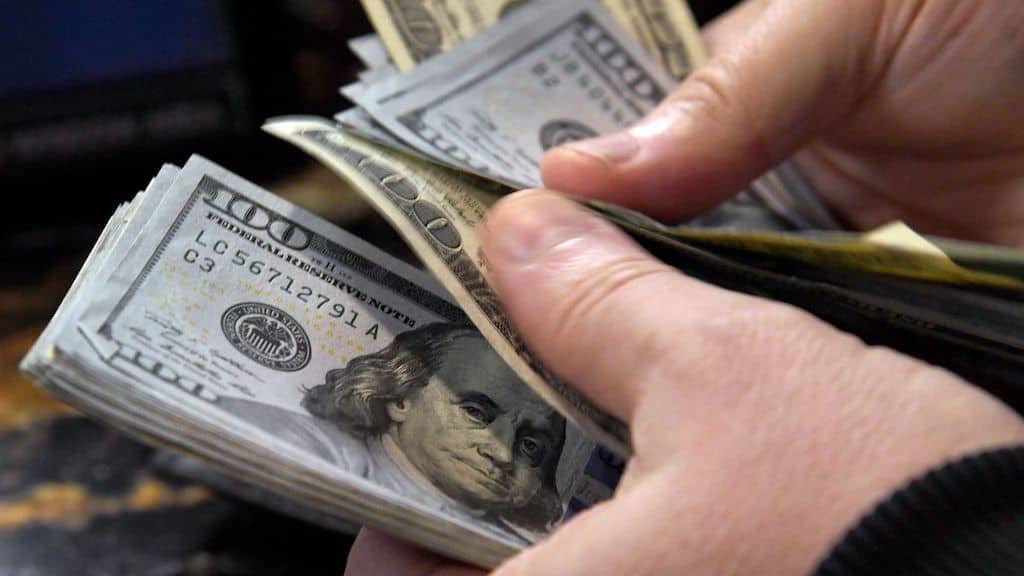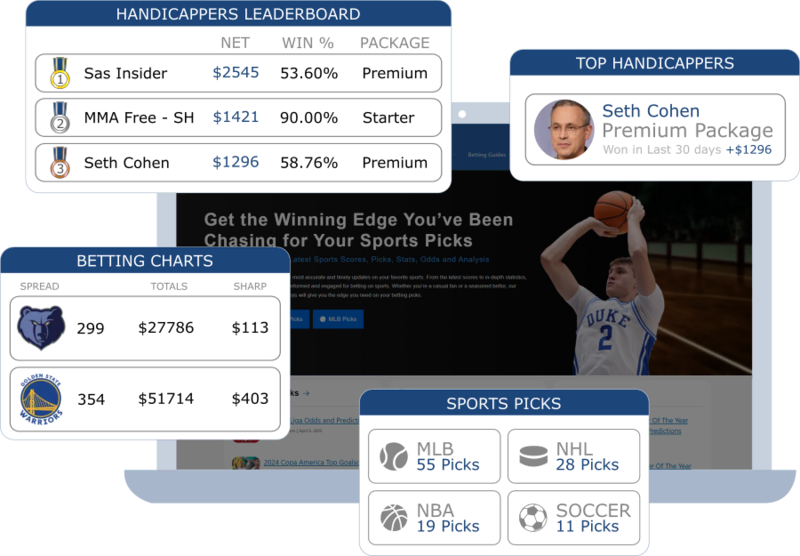Table of Contents
How to Bet Straight Bets
When you are learning how to bet, the first thing you need to understand is the different types of bets. A straight bet is one of the simplest bets that you can make.
A straight bet, sometimes referred to as a single bet, is one in which the bettor places one wager on the moneyline, a point spread, or on a game total.
There are bets – parlays, for example – that consist of more than one bet tied together into a single bet. A straight bet is simply one wager and that wager can be a moneyline bet, a point spread bet, or a totals bet.
That means we need to know what each of these bets is, and we should understand how the odds work as well. In this post, we will do just that as well as offer some tips and strategies and some pros and cons to straight bets.
History of Straight Bets
While sports betting is a multi-billion dollar global industry now, it didn’t start out that way. Sports betting likely started with the very first chariot races in ancient Rome. Early bettors wagered on chariot races much the way that bettors today wager on horse races.
Over time, sports betting entered the world of horse racing, first in Europe and then in America. Bettors could place a straight bet on a horse to win, place, or show. Betting on horse racing was really the only sport to bet on until the 1800s when other sports started to become more mainstream.
The next big sport that started to see a lot of betting action was professional boxing. Soccer, with its worldwide reach, was played all over the world making it accessible to bettors everywhere.
Once baseball, football, and basketball started to rise in the U.S., it was only a matter of time until bettors found a way to wager on games. Sports betting was not legal in the U.S. – except for Nevada – until the repeal of PASPA (Professional and Amateur Sports Protection Act) in 2018. There were some municipalities that allowed some forms of gambling, but not like today.
A movement toward legal sports gambling had been growing around the world for years in the mid to late 1900s. Online betting sites started popping up in the mid-1990s. Most sports bettors are recreational gamblers. They don’t bet on sports for a living. Usually, they prefer the simpler straight bets.
Betting on a horse to win or betting on a boxer to win a fight…these are both examples of a straight bet. Betting on an NFL team to cover as a 3-point favorite is a straight. Betting on the Over in an NBA game is a straight bet.
Straight bets are the simplest to understand. Even a novice, someone who has never placed a sports bet before, can easily grasp the idea of a straight bet. That brings up the question, “what sports or sporting events can bettors place straight bets on?
How to Bet Straight Bets on Major Sports

Bettors can place a straight bet on any of the four major North American sports leagues – NFL, NBA, NHL, MLB – as well as college football, college basketball and a number of other so-called niche sports. These would include sports like tennis, golf, auto racing, and more.
Remember, a straight bet is just a single bet. When you place a wager on the Tampa Bay Buccaneers to win their game against the New Orleans Saints, you are placing a straight bet.
When you place a wager on the New York Yankees on the run line in their game against the Boston Red Sox, you are placing a straight bet.
There are literally thousands of examples of a straight bet. You can place a wager on a driver to win the Indianapolis 500. How about a bet on a singles tennis match between Rafael Nadal and Novak Djokovic? If you wager on Djokovic to win, it’s a straight bet. If you wager on the Over/Under on the number of games played in the match, that’s a straight bet too.
Straight bets are not limited to specific sports. They are also not limited to certain bet types. A number of bet types are straight bets. These include moneyline, point spread, and totals bets. Here are examples of each.
Moneyline Bets

The moneyline bet may be the easiest for inexperienced bettors to comprehend. When you bet on the moneyline, you are simply betting on a team or individual to win a certain event. It could be an NFL or MLB game or it could be a golf tournament matchup between two professional golfers. The bettor picks the winner.
There are also events that offer moneyline odds, such as NFL player props. The Anytime Touchdown prop, for example, offers bettors moneyline odds on whether a certain player will score a touchdown in a game. An explanation of how moneyline odds work can help.
Let’s take the Tampa Bay Buccaneers again in a game against their division rival New Orleans. The game is being played in Tampa and the Buccaneers are favored to win. At your sportsbook, you may see something like this:
- New Orleans +120
- Tampa Bay -140
As indicated by the -140 odds, the Bucs are favored to win this game. A bettor would have to wager $140 to win $100 on Tampa Bay. Bettors don’t have to wager $100, but they will be paid out at a rate of $1 for every $1.40 wagered.
On the other end of the bet, New Orleans is the +120 underdog. Bettors can wager $100 and win $120 if the Saints pull the upset.
Bettors will see NFL games where the underdog has +250 or even higher odds. Bettors should remember that there is a reason why a team is a big favorite or big underdog. Oftentimes, bettors can find value in a team like the Saints in this example. Bettors think New Orleans will lose, but at +120 bettors might find a good reason to bet on the Saints. That leads to a stronger payout at plus-money odds.
In the end, if Tampa Bay wins and you bet $140 on the Bucs, you are a winner. Your payout is $240 which includes your initial $140 bet plus the $100 from winning the wager.
A number of other bets like the Anytime Touchdown Prop we mentioned, also offer moneyline odds. Take the following example:
- Cooper Kupp +125
- James Conner +165
- DeAndre Hopkins +165
- Darrell Henderson +280
- Tyler Higbee +370
- John Wolford +380
The above is taken for a game between the Arizona Cardinals and their NFC West rival Los Angeles Rams. Each player listed is given moneyline odds on scoring a touchdown at any point during their game.
If you like Cooper Kupp of the Rams to catch a touchdown pass in this game, you can wager $100 and win $125 if he comes through. If he doesn’t score, you lose, but you get the idea.
All moneyline bets on a single game or event are examples of a straight bet.
Point Spread Bets

The point spread was adopted years ago as a way to even the playing field between two teams. A point spread bet is one on the margin of victory in a sporting event. The point spread bet is the most popular type of bet in football and basketball.
The perceived favorite must win by a certain number of points in order to cover the spread. The underdog can cover the spread by losing by an amount less than the point spread or by winning the game outright.
In the NFL for example, the best teams in the league in a given season are better than the worst. Let’s say a team like the Green Bay Packers is unbeaten and they are playing a team like the Cleveland Browns which has just one win.
The Packers would be the favorite and they could very well be a double-digit favorite. That doesn’t happen that often in NFL games as even the worst team in the league is capable of pulling the upset and beating the best.
Anyway, let’s use the Packers and Browns as an example. The Packers are a 9.5-point favorite to beat the Browns.
- Green Bay -9.5 (-110)
- Cleveland +9.5 (-110)
The point spread in this case is 9.5. Green Bay must win by at least 10 points in order to cover the spread. Most point spread bets come with juice – the commission a sportsbook charges to take a bet – of -110. That means a bettor must wager $110 to win $100 or $1.10 to win $1.00.
Watch the Juice
The juice is the same on both sides of this bet and that is typical though sportsbooks can adjust those odds as they see fit. If you like the Browns, your $110 wager would payout winnings of $100 if Cleveland lost by nine points or less or beat the Packers outright.
If the final score of the game was Green Bay 37, Cleveland 21; the Packers would have covered the spread. They won by 16 points, which is more than the point spread of 9.5. Any
Point spreads are common in sports like football and basketball, but they can also be applied to things like games and sets in tennis and even corner kicks in soccer matches.
A point spread, just like moneyline odds, is set by oddsmakers at a sportsbook. The oddsmakers use mathematically driven ratings for each team before the season and continue to adjust them throughout the season as games are played.
A number of factors like where a game is played, injuries, rest, and the ratings all go into creating a point spread in advance of a game. As bettors begin wagering on an initial point spread, the number may adjust even more as it moves to the most accurate possible number.
In reality, most sportsbooks do not create their own lines. They simply copy the lines and line movement from other major sportsbooks. Regardless, it is important for bettors to understand point spreads and odds before placing bets on them.
Totals Bets

Another of the more common straight bets is a wager on the game total. Totals bets, also referred to as Over/Under bets, are exactly what they sound like. Bettors are wagering on whether the final combined score of a game will go Over or Under a total established by oddsmakers.
Bettors do not have to guess the exact final total score of a game. They are betting on whether the total will be higher or lower than the total set by a sportsbook. Totals on NFL and NBA games are among some of the most popular bets at all sportsbooks.
Again, an example is one of the easiest ways to truly understand how to bet game totals. Let’s use an NBA game. Boston is playing Atlanta and the game total is set at 221.
- Boston O 221 (-110)
- Atlanta U 221 (-110)
Boston is a great defensive team, but Atlanta plays at a fast pace and has some great scorers. In the end, you decide you like the total to go Under 221.
Once again, we see the “-110” in parentheses indicating the odds on each side of the bet. Here again, we know that a $110 bet on the Over or Under will pay out $100 in winnings if we are correct.
Let’s say you wager on the Under. The final score of the game is Boston 110, Atlanta 107. The total number of points scored is 217. That is Under 221 which means you win the bet. Keep in mind that it doesn’t matter who wins the game. Only the final total number of points counts. If a game goes to overtime, those overtime points count as well.
In a case where the total is a whole number like our example above, a “push” is possible. This would occur if the final score had been 111-110, for example. The total number of points scored in the game was 221, which is the set game total. The resulting push means that all bets are refunded. No one wins and no one loses.
How Moneyline Odds are Calculated
Before technology took over sports betting, bookies would try to “make the book.” They would try and balance out all of their bets so that in the end they would come away with a profit. Bets were recorded in a book, hence the term bookmaker. Odds were also often seen on a chalkboard, which is where the term “chalk” comes from.
The bookie would assign a probability to every result. In a given game, these probabilities would add up to 100 percent. Team A had a 70 percent chance of winning. Team B had a 30 percent chance.
Bookies then introduced the idea of “juice” or “vig,” which was an additional 5 to 10 percent on every result. This extra percentage was the bookie’s commission for taking a bet. The idea was that if a bookie could balance out his bets, he would always make a profit from the juice.
Over time, of course, technology has been introduced to the sports betting industry. Today, betting odds are compiled using all sorts of databases full of relevant information. Oddsmakers analyze numbers to correctly assess the probability of every outcome. They apply the vig and then set the final price that you see when you open up your sportsbook app.
Why Do Most Sportsbooks Have the Same Odds – How to Bet Straight Bets
Most odds compiling is outsourced. There are companies that specialize in odds compiling for both pregame and live betting. That is why most sportsbooks will have nearly identical odds for the same bets. Bettors can still search to find value, but sportsbooks are generally in the same ballpark on most bets.
We should understand moneyline odds and how they work by now. Remember from our example above with the Buccaneers and Saints. Knowing where odds come from is a huge part when learning how to bet straight bets.
- New Orleans +120
- Tampa Bay -140
The Bucs are favored and a bettor must wager $140 to win $100. The Saints are the underdog and a $100 bettor would win $120 if New Orleans pulls the upset. These odds were established by an odds compiler and oddsmakers that sifted through tons of research to establish the best price.
Moneyline odds can then be influenced by a number of other factors including the action of bettors. If bettors are pounding the Saints, you might see the moneyline odds for New Orleans shift to +110 or even to -105. The odds for Tampa Bay would shift as well to encourage more bettors to wager on the Bucs.
Injuries and the weather are other factors that could change moneyline odds prior to closing before a game. Sometimes, the rivalry between the two schools could play a role and even the playing surface. Just keep in mind as you learn how to bet that moneyline odds can change from their opening until they close just before a game starts.
Tips & Strategies for Straight Bets

We know that straight bets are the most popular ways for bettors to gamble on sports. There are a number of strategies that can be employed to increase bettors’ winning percentages and their bankroll.
The general tips for bettors are the same for all types of bets whether they are point spread, moneyline, or totals bets. These even apply to futures bets and props. If you want to have success, do not skimp on the research. You have to know your teams, players, or whatever it is you are betting on. Don’t make hasty betting decisions with a lack of information.
Another general tip is to shop different sportsbooks for the best odds on the games and events you want to bet. As mentioned, sportsbooks follow each other and typically have similar odds on all bets. Similar does not mean the same and oftentimes bettors can find an extra half-point or even better juice on bets they like. Shop around and take advantage of better pricing.
One general tip that is often ignored is for bettors to hedge a bet. Don’t ever be afraid to hedge a bet. If you are in a situation where you can minimize your losses by placing a second bet, don’t be afraid to pull the trigger. Hedging bets is much easier today with the advent of live betting.
Finally, stick to a money management strategy. You always begin with an amount that you are comfortable losing. Then, you stick to a certain stake amount. It might be a flat amount. It might be something like 1 to 5 percent of your bankroll. If you bet $100 a week, your most confident bets would be $5 and your least confident may stake only $1. Never chase your losses as that is a recipe for disaster and will most likely lead to the end of your bankroll.
With a little bit of luck and some smart strategy, you can come out ahead in the long run.
Pros and Cons of Straight Bets
Most sports bettors are placing straight bets when they go to their sportsbooks and place a wager. We know by now that a straight bet is simply a single bet on the outcome of a particular game or event.
Straight bets can be made on the point spread, moneyline, or total and even on game props and futures bets. There are several advantages to straight bets.
First, they are relatively easy to understand. A straight moneyline bet is the easiest of all to comprehend. Go back to your youth when you bet your buddy that your favorite team would beat his favorite team. That’s a pretty simple straight bet.
Second, straight bets usually offer better odds than many other types of bets. A single moneyline bet on an underdog offers a plus-money payout meaning that if you get a dollar you are getting back more than a dollar in profit. A straight bet on a golf tournament, for example, offers a great payout. Even a favorite might be given +500 or +750 odds. A $100 bet pays out $500 or $750 in those cases. That’s a nice return.
Straight bets can be placed on a wide variety of sports and events. Straight bets are available in all the major sports plus less popular sports like boxing, tennis, and auto racing. Bettors can place straight bets on single games, but also on seasons and even individual player performances.
Now, it’s not all champagne and roses when placing straight bets. There are some downfalls. They may require a bettor to have a larger bankroll. One of the most popular bets in sports is on the point spread in football and basketball.If you are betting favorites, you are winning $100 for each $110 wagered. A point spread bettor needs to win more frequently to offset the smaller payouts on his wins.
To have success with straight bets, it takes a good deal of time and research to ensure that you do win more often than you lose. Making a strong betting decision doesn’t come easy. For casual bettors, it may not be worth the time and effort to consistently wager on straight bets.
Placing a Straight Bet
As we have hammered home, straight bets are the most common and simplest type of sports bet. A straight bet is simply when you pick a team or player to win a game or event outright.
For example, if you believe that the Golden State Warriors will win the NBA Finals, you would place a straight bet on them. The straight bet in this case could be a series bet, meaning you are betting that the Warriors will win their NBA Finals series. The straight bet could also have been a futures bet placed at the beginning of the regular season. It could also simply be a straight bet on the Warriors to win Game 7 of the NBA Finals.
To place a straight bet, you simply open your sportsbook app and place your wager. Using our Tampa Bay-New Orleans example, you would find the Bucs to be a -140 favorite on the moneyline. The Saints are a +120 underdog. You decide how much you are going to wager and place your bet. The ease of use of most sportsbook apps today will allow you to place a bet within a few minutes. Then, you sit back, watch the game, and hopefully see the profits of your effort.
The Final Word on How To Bet Straight Bets
If you have ever placed a sports bet, you have likely placed a straight bet. They are easy to understand and typically offer better odds than many other types of bets. Because there are so many types of straight bets, it is important for bettors to understand the different bet types.
Betting on the moneyline isn’t the same as betting the point spread. If you want to have success in either, make sure you understand the nuances of each. These little nuances are the difference when knowing how to bet straight bets.
With a strong understanding of bet types and of how odds work, the smart bettor can place straight bets with success.





